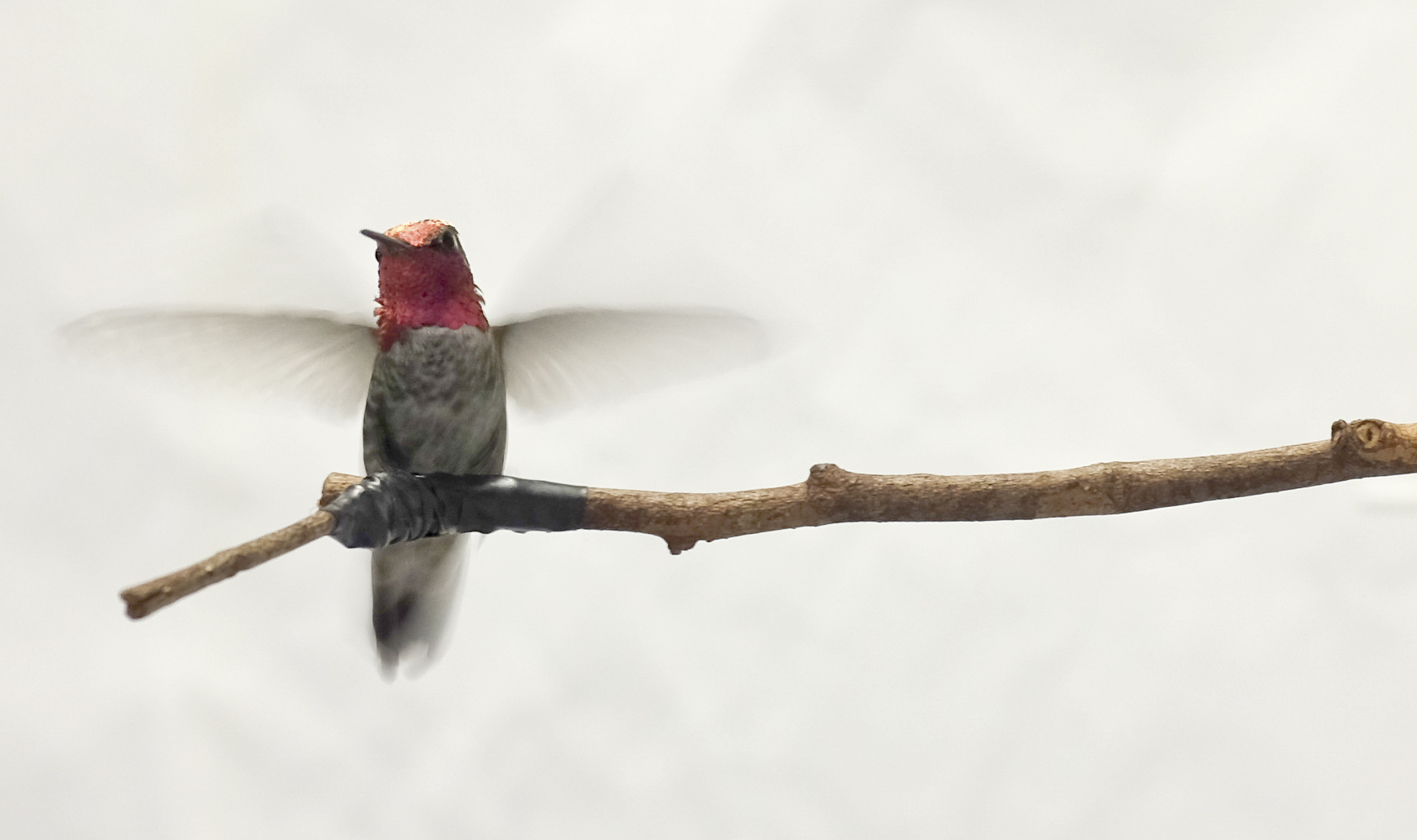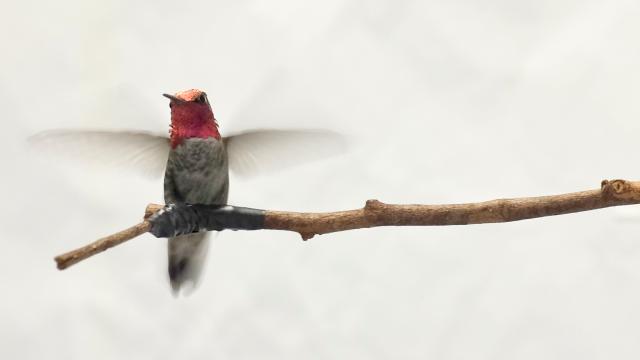Hummingbirds are some of the most sophisticated fliers on Earth, weaving in and out of branches without so much as rustling a leaf. Now, biologists have discovered a new mechanism these feathered helicopters use to avoid collisions — and it could help us build better drones.
Many insects, including honeybees and houseflies, steer using a simple visual cue: How quickly objects pass them laterally. Known as pattern velocity, this cue will be familiar to anybody who’s driven on a motorway and noticed that it takes longer to pass a city 30km in the distance than it does to pass a sign on the side of the road. But flying insects still have a tendency to crash into things, suggesting pattern velocity is an imperfect navigational aid.
Birds rarely crash compared to insects, leading biologists to suspect they have evolved more sophisticated in-flight steering. But few studies have actually tested how birds navigate while flying, given that it’s rather difficult to stick a bird in a laboratory enclosure where it can cruise about comfortably.
That’s why biologist Roslyn Dakin of the University of British Columbia turned to hummingbirds. “Hummingbirds are sugar fiends — they have to take a drink every ten to fifteen minutes,” she told Gizmodo. “That means we can put a bird in a chamber and get him to fly back and forth hundreds of times over the course of a day.”

Anna’s hummingbird, common to the Pacific Northwest. Image: University of British Columbia
Which is exactly what Dakin and her colleagues did. They placed a common Pacific hummingbird called Anna’s hummingbird in a 5.5m-long tunnel with a perch at one end and a feeder at the other, and projected still or moving patterns of varying sizes and orientations across the tunnel walls. Thousands of trips to and from the feeder were recorded and analysed.
To the researchers’ surprise, hummingbirds did not simply steer away from walls with faster-moving patterns, indicating that they aren’t relying on basic pattern velocity cues. Instead, it was the rate of change of pattern size that mattered.
A tree branch 30cm away will expand more quickly than a tree branch 3m away, if you approach both at the same rate. It appears that clever hummingbirds use slight differences in this expansion rate to determine when they’re getting too close to an object, and to make course corrections accordingly.
It’s the first time this specific type of navigation has been observed in a flying animal, and it could help explain why hummingbirds are such amazing aerialists. Dakin’s colleagues are now exploring what’s happening in the hummingbird brain while the animal is steering.
“We want to pursue the idea that this could be more neurologically complex,” Dakin said. “Hummingbirds are capable of such remarkable speed changes — the Anna’s hummingbirds do courtship displays where the males fly at up to 90 kilometres per hour, and they’re able to just stop on a dime.”
Eventually, the research could lead to smarter navigational algorithms for aerial robots. Engineers are already using insights from flying insects to develop robots that can save energy in the air — meaning hummingbirds might help the delivery drones of tomorrow navigate our neighbourhoods with fewer crashes.
